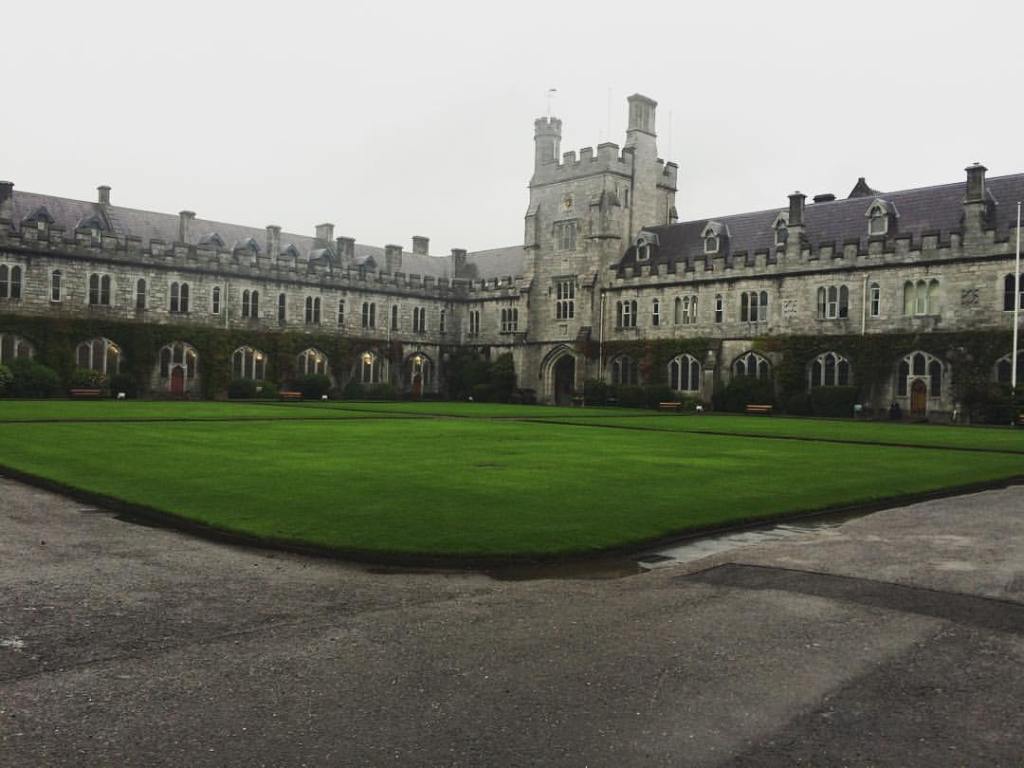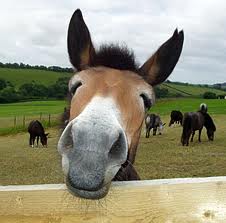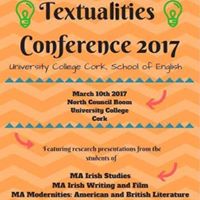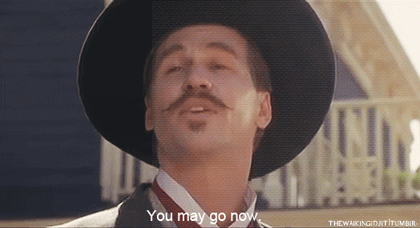First off, I’m sorry for the delay in a reflective post about the mini-conference; however, after all the stress and exhaustion caused by preparation for, and even on, the conference day, I needed some distance.
After all was said and done though, the mini-conference was entirely enjoyable.
The Textualities’17 mini-conference was not my first nor my second academic conference. I’ve had the absolute pleasure and privilege of presenting at the annual international Sigma Tau Delta convention in the States. (You can actually go view the website for this year’s convention, if you want: http://www.englishconvention.org/2017/) However, UCC’s mini-conference was perhaps the most stressful academic conference I’ve attended. I think that’s part and parcel to the fact that we students organised and ran the conference, and that it’s presentation style was wildly different than what I’ve encountered before.
When preparing for Textualities’17, there were a couple of things I felt concerned about, as well as a couple of things I was excited for.
The conference was set up in six different panels throughout the day with breaks for lunch and coffee. Each panel had an assigned student who acted as the Chair to introduce presenters and facilitate the Q&A session following each panel. We also were told to live-Tweet about the conference and different panel throughout the day.

An example of what my Twitter feed looked like on the conference day.
I can say with certainty, the prospect of live-Tweeting and, for some of us, live-blogging the conference was significantly less stressful than focusing on our own presentations.
Mainly, my concern–and I think most of my cohert’s–centered around the presentation style of the mini-conference: Pecha Kucha.
Pecha Kucha is a presentation style that prescribes a 20×20 formula. The 20×20 stands for using only twenty slides and spending only twenty seconds of the presentation on each slide; this makes for a presentation that lasts only 6 minutes and 40 seconds. The style also recommends that you don’t use text on your slides, and if you do, it recommends that you only use small amounts. Essentially, the idea is that you use images which will speak to the presentation you’re giving, but not act as the presentation. (If you’re interested in learning more about the Pecha Kucha style, you can follow this link to Pechakucha.org.)
The task of presenting on (what we hope will be) our thesis topics in such a short amount of time seemed incredibly daunting. However, I was also kind of excited about the presentation style, as well. The kind of forced concision that Pecha Kucha demands made me hopeful that it would bring into focus more of what I want to address in my thesis.
Update: it totally did!
My preparation for the Pecha Kucha presentation started out with me writing down long rambling sentences that vaguely addressed ideas of Zora Neale Hurston’s Their Eyes Were Watching God as a text on the Self and the Other. I had way too many ideas and not enough direction.
On the mini-conference day, after loads of practice, revision, more practice, and more revision, I actually had what I felt was a solid direction to move with in my research.
My thesis will focus on Hurston’s use of symbolism and binary images in the text to address the (gendered) Other. I will look at her work through the lens of French feminist theory, as well as the work of Jacques Lacan, and with attention to her personal life–so, looking at Hurston’s work in anthropology, her work with folklore collections, and also the social climate of the time when she was writing.
In my presentation, I tackled a brief history of Hurston and introduced her book to my fellow students and the faculty members in attendance. I also addressed the theorists (Jacques Lacan and Helene Cixous) I want to look at during my thesis process and outlined a few different reasons I’m interested in their work. After that, I felt it most effective to only look at one of the binary images I see in Their Eyes Were Watching God and use it as an example for my interest in the Other of Hurston’s work. For the presentation, I chose to focus on the image of the mule in Hurston’s work, binary to the image of the master.
After the presentation ended came the part I think we all dreaded most: the Q&A.
Of course, we definitely didn’t have reason to be so flustered. The questions we all received were lovely and, I think, we each answered intelligently.
All-in-all, the day was a great success and I’m proud of my third experience in an academic conference!
You are welcome to view my presentation slides through the Prezi website. However, do remember that the presentation slides are mostly images, so don’t be alarmed if you don’t exactly follow what the slides represent.






